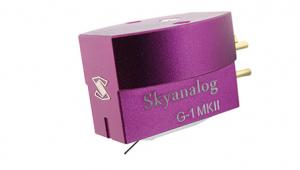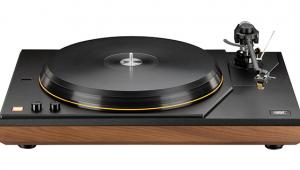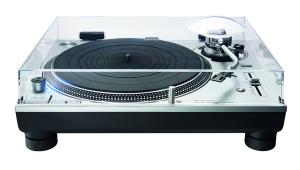Holbo Airbearing Turntable
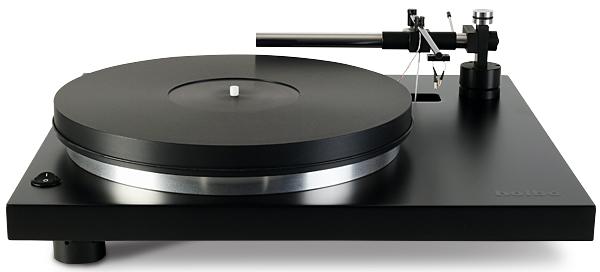
 An air-bearing turntable and a parallel-tracking, air-bearing tonearm in a single, easy-to-use package for under £7000? Devotees of both will love the Holbo Airbearing
An air-bearing turntable and a parallel-tracking, air-bearing tonearm in a single, easy-to-use package for under £7000? Devotees of both will love the Holbo Airbearing
Every product type has its following, however focused. I am sure, for example, that there are devotees of hybrid amps with tube front-ends and solid-state output stages just as, among the niches in LP playback, audiophiles are tempted by air-bearing turntables and parallel-tracking tonearms. Made in Slovenia by Bostjan Holc, the Holbo Airbearing combines those two, and does so for an almost-inexplicable £6500.
Here's my observation of the economics: I have no idea when wages in Slovenia, Slovakia, et al, will match those of Germany, but this also works in its favour, as lower manufacturing costs help exports. This is a simple fact, and it's the only way I can figure out how such a technically complex and beautifully made package can be offered for what a US or Western European brand might charge for just the arm or the deck, but not the pair.
Editor PM told me it was a doddle to set up, in contrast to every other device I have ever used which involved air pumps, and he was right. There was, of course, back-up in the form of a superb owner's manual, but this deck is so intuitive that I had to learn only one lesson the hard way: never have I experienced anything so critical about being levelled to perfection. Fortunately, the unit rests on three pointy feet, two of which are adjustable – plus I also ensured my turntable rack was also absolutely level.
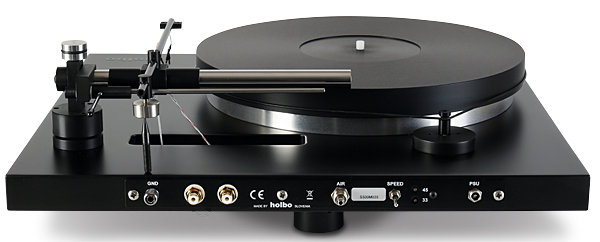 <>
Plinth Charming
<>
Plinth Charming
Why so critical? You can't set up the arm if it isn't faultlessly horizontal because it will slide away from you when you least need it to do so. That was the only unanticipated event and I actually had this up-and-running in 30 minutes. That included fitting the cartridge, a fiddly process that will demand as much forbearance as setting up a Hadcock, Mayware or Syrinx of yore.
What first strikes you about the Holbo pairing is its simplicity. In style terms, this is the air-bearing, parallel-tracking equivalent of that turntable of Bauhausian clarity and minimalism, the Rega Planar 2, which – for this scribe – remains the cleanest record deck design ever. The Holbo Airbearing is so uncluttered that even the black-on-black logo on the front right-hand corner of the deck disappears when viewed from certain angles.
Holbo has devised what is simply a slab with a POM/Delrin platter, the tonearm emerging from a cut-out at the back, with a basic on-off rocker in the left-hand corner. Speed change is via a toggle at the back, and cueing is as basic as it gets – an undamped lever behind the arm. It's slightly awkward to get to if the deck is mounted above waist-height, and you will certainly want full control of its manually-applied descent, so consider this if your equipment rack is especially tall.
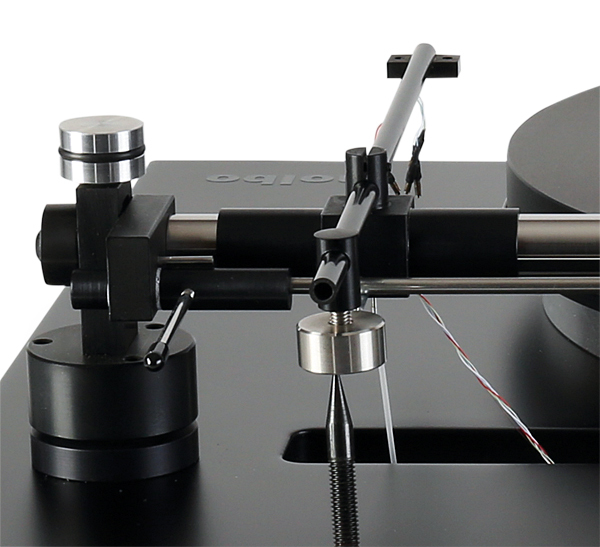
Model Deck
Two black boxes – provide AC power and air for the bearing and the tonearm. The unit comes with enough tubing to allow you to put the pump in another room, but it was so quiet that I didn't bother. The hose is connected to a nipple on the air pump and another on the back of the deck, secured with screw-down collars. The power supply connects through a socket at the back, and – as the deck is supplied without signal leads – the user can fit whatever cables he or she prefers to the Holbo's RCA connectors and earthing tag.
My only complaint at this stage is the lack of a dust cover, which I would assume should be critical for keeping schmutz, dust and air-borne grime off the arm's guiding cylinder. Other than that, this is a model of clear thought and attention to detail, finicky arm set-up apart.
Arm Twisting
Having connected the deck to my EAT E-Glo phono stage, I used the cable that was supplied with the recently-reviewed EAT B-Sharp turntable [HFN Jul '20]. As for the cartridges chosen for the listening, these included the EAT Jo No5 MC [HFN Dec '18], an aged Tsurugi MC and Ortofon's 2M Red MM [HFN Oct '08]. Set-up was undertaken with the supplied gauge, mirror-finished to help with azimuth, while overhang requires lining-up the stylus to intersect with the spindle. Arm height is adjusted at the back, but it's the azimuth and overhang setting that will demand you don't precede installation with a few cups of coffee.
Holbo's arm tube is completely removable from its horizontal mount if the counterweight is not yet fitted, so if you loosen the set-screws to adjust its length it can rotate, rendering the headshell no longer perfectly horizontal to the platter when viewed from the front. Now you see why the gauge has a mirror surface.
I soon figured out that loosening the set screws to allow only slight movement enabled me first to set the overhang, then to twist the tube as necessary to ensure faultless 'verticality' from the front. By this time, you will have learned, too, that the cueing is direct in its action and not damped, so care is needed.








